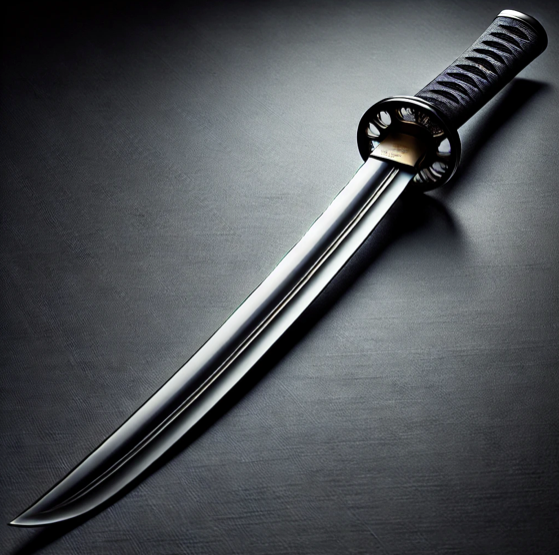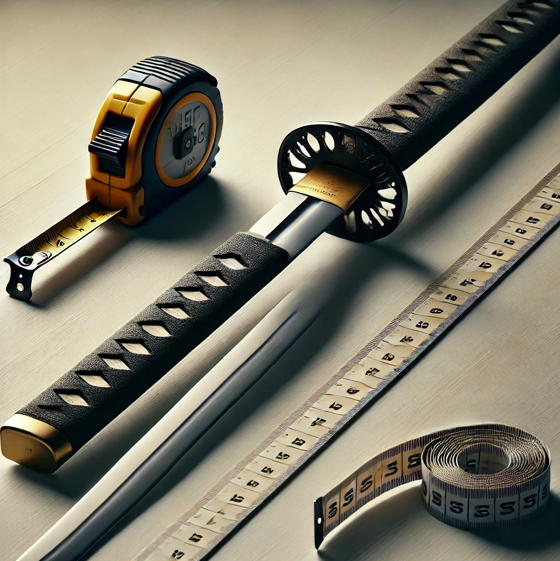Review
Unveiling the Art of Katana Length and Dimensions: Everything You Need to Know About the Japanese Sword
The katana, which is often the focal point of Japanese weaponry, has an allure beyond its sharp blade and dramatic curve. The katana is a real work of art and represents a cultural emblem. It’s a finely tuned tool shaped with precision over centuries. It’s true that many marvel at its uniqueness, but only a few truly understand the role that katana dimensions play in its performance, usability, and, most importantly, its significance to its wielder. In this article, we’ll get more insights about katana length and we’ll take a deep dive into facets of this weapon’s dimensions. We’ll help you appreciate why a few centimeters here or there can make all the difference.
Katana Length and Dimensions: Why are they So Important?
Let’s make an imagination exercise. Think about a katana as a carefully balanced scale. This means that every millimeter has been meticulously crafted to achieve harmony between blade, handle, and the practitioner’s style. Whether used in martial arts or as a collector’s treasure, the dimensions of a katana dictate its essence. A katana that’s too short or long for its wielder disrupts this harmony, affecting balance and control. This is why katana length is not a matter of mere preference but a question of compatibility.
Each of the katana dimensions influences the function and authenticity. A different dimension represents different aesthetics. Let’s take a close look.
- Nagasa – Blade Length
The blade length, or nagasa, is the heart of a katana’s dimensions. Traditionally, the blade of a katana falls between 60 to 80 centimeters (about 23.5 to 31.5 inches). This length range allows for powerful, sweeping cuts while maintaining control, a crucial element for practitioners of martial arts like Iaido, where precise movements are essential.

But how is the right blade length determined? Surprisingly, it’s more art than science. Factors like height, arm span, and even personal style come into play. Generally, a blade length that reaches from your wrist to your ankle provides a balanced reach and control.
2. Tsuka: Length of Handle
Typically, the tsuka, or handle, is between 25 and 30 centimeters (9.8 and 11.8 inches) in length. A well-proportioned handle should be comfortable in both hands, which facilitates the traditional two-handed hold that is required for strong and accurate katana use. Additionally, this length improves balance; a handle that is too long or too short makes the katana heavy and hard to hold.
Traditionally, the handle length is about one-third of the blade length, a ratio that helps to ensure that the katana feels well-balanced. A longer tsuka, for instance, might be ideal for users who favor a two-handed grip with more leverage, while a shorter tsuka suits those who prefer compact control.
3. Motohaba and Sakihaba – Blade Width
Next, we have the motohaba (width near the base) and sakihaba (width near the tip), which, though subtler than length, impact the katana’s performance and appearance. A katana’s width tapers slightly from base to tip, making it stronger at the base, where the sword experiences the most stress. Blade width influences the balance between durability and agility. A wider base improves cutting power and endurance, while the tapering towards the tip allows for more precise cuts and maneuverability.
4. Kissaki – Tip Length
The kissaki, or tip of the katana, is an often overlooked but vital part of katana dimensions. Typically, the kissaki measures around 3 to 4 centimeters. There are different styles of tips – long, medium, and short – each lending a different level of thrusting ability and aesthetic appeal. The longer kissaki is more elegant, favored for aesthetic purposes, while shorter tips offer more control, especially in close-combat scenarios.

5. Curvature of Sori
The katana’s sweeping grace is attributed to its distinctive curvature, or sori. At its greatest depth, this curve, which is generally 1.5 to 2 cm, offers both aesthetic appeal and practical usefulness. Curved blades improve slicing efficiency and enable a smoother draw from the scabbard. Practically speaking, the curve improves “draw cutting,” in which the blade makes cuts as it is drawn. While a softer curvature works better for thrusting, a more visible curve may boost slicing skills.
How to Choose the Right Katana Length for You
Selecting the right katana length is an art form in itself. Here are some guidelines to consider:
Arm Length and Height
While shorter practitioners frequently find that a shorter blade offers better control, taller people may benefit from a longer blade for extended reach. As a starting point, several experts advise selecting a katana whose blade extends from your wrist to your ankle.
Style of Martial Arts
The recommended length of a katana varies depending on the martial art. For instance, Kendo practitioners could select a somewhat shorter katana for agility and rapid motions, while Iaido practitioners might prefer a longer blade for longer cuts.
Individual Comfort
Ultimately, comfort is the most important factor. A katana should feel balanced, natural, and like an extension of your arm when held. It’s common to test different lengths before settling on one that feels “just right.”

Commonly Asked Questions about Katana Length and Dimensions
What is the standard katana length?
The traditional katana blade length ranges from 60 to 80 centimeters, though there’s no absolute standard as length can vary based on the user’s needs and purpose.
How do you measure a katana?
The blade is measured from the tip of the kissaki to the munemachi (the notch where the blade meets the handle), while the handle is measured from the blade base to the tsuka end.
Does a longer blade mean a heavier katana?
Generally, yes. Longer blades tend to be heavier, affecting ease of handling. However, skilled swordsmiths can craft longer katanas that are lightweight yet strong, striking a balance between reach and control.
Are there legal restrictions on katana length?
In Japan, civilian-owned swords over a certain length require special registration. Generally, blades longer than 60 centimeters are more closely regulated.
Variants of Katana and Their Sizes
The discussion of katana length is further complicated by the various varieties of Japanese swords, each with its own dimensions:
Tachi: Usually longer and worn edge-down, the tachi is the katana’s predecessor. It was perfect for mounted fighters because of its additional length.
Wakizashi: Often worn with the katana, the wakizashi is referred to as the katana’s “little brother.” Its blade length ranges from 30 to 60 cm.
Nodachi/Odachi: These magnificent swords, which were employed in battle, have blades longer than 90 centimeters. They were mostly utilized on battlefields, but because of their length, they were difficult to carry and use.
Picking a katana is much more than selecting a sword. You should be able to find a balance and control over it. It’s about connection and harmony. Like we’ve shown in the articole, each dimension is different and has its purpose, whether it’s the curve’s graceful arc, the weight that feels just right, or the length that fits you perfectly.
We can describe katana sword as a harmonious blend of form, function, and history. So, as you hold a katana, know that its dimensions are a reflection of centuries of tradition, designed to be as unique as the wielder themselves.

